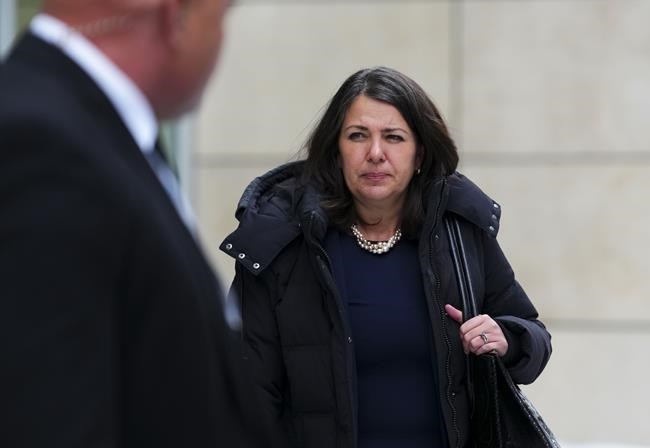EDMONTON — Premier Danielle Smith says laggardly public notification of Imperial Oil oilsands wastewater spills has illuminated the need for Alberta to ensure future alarms are sounded quicker.
Smith says her government is working with the province's oilsands regulator to develop better policies to give affected groups timely notification.
“Good practice and being a good neighbour (means) more communication is better,” Smith said Tuesday at an unrelated news conference in Mundare, Alta.
“That’s going to be our approach going forward. I’ve talked to the environment minister about that and the energy minister about that and the regulator about that.
“We’ll be working with the (Alberta Energy) Regulator to develop new processes to make sure that any time there is an incident that the comms are clear, that we have radical transparency and, just even as a courtesy, make sure any impacted party has a heads-up so they don’t have any fear based on the misinformation they see on social media or in the media.”
Area First Nations and the Northwest Territories government have said they should have been kept in the loop on the spills from Imperial's Kearl mine tailings ponds.
Athabasca Chipewyan First Nation, which is downstream from the spill, said in a statement Tuesday that its representatives were recently able to access the spill site on the north side of the Kearl tailings pond.
"What we observed was worse than what anyone anticipated," the First Nation said.
It said representatives saw toxic water still on the ground in an unfenced, uncontained area beside streams and ponds.
It said it also saw animal tracks in and out of the area, tailings puddles and no barriers between seepage and water bodies.
“We won’t stop until we have a full accounting of this catastrophe. We are not going away,” said Chief Allan Adam.
The N.W.T. has called it a violation of its agreement with Alberta for timely updates on emerging threats to their shared watershed.
The first wastewater release was spotted and reported in May as discoloured water near a tailings pond at the Kearl site north of Fort McMurray.
It was found to be tailings seepage and no further updates were provided to area First Nations until February when it was disclosed to the public and federal and provincial environment ministers along with news of a second release of 5.3 million litres of tailings.
Earlier this week, federal Environment Minister Steven Guilbeault repeated his call for a stronger federal presence when it comes to environmental monitoring and communications in the oilsands in light of the Kearl seepages.
Guilbeault also repeated his plan for a new body with federal, provincial and First Nation members that would meet regularly to share information, especially on environmental emergencies. It would also discuss cleaning up tailings releases, how to keep the vast toxic ponds contained and long-term solutions for them.
Guilbeault said officials from Imperial and the Alberta Energy Regulator will be invited to appear before the House of Commons environment and sustainable development committee.
Smith said she welcomes the joint working group but echoed earlier comments from Alberta Environment Minister Sonya Savage that the committee hearings would be a needless, politically motivated distraction.
“They’re trying to distract from the problems that they have in Ottawa on the investigation into Chinese interference in the election,” said Smith.
In public statements, Savage has agreed on the need to look at communication between the two levels of government as well as long-term solutions to oilsands tailings, which cover 300 square kilometres and hold 1.4 trillion litres of toxic tailings.
Smith said the spills reinforce the need to accelerate work with Ottawa to find a solution to clean up the tailings ponds.
“We can’t just keep building tailings ponds out and we can’t just keep managing and monitoring,” said Smith.
“We have to find a way to eliminate the (wastewater) after it has been cleaned and make sure we’re reducing the further liability. That’s the big problem.”
— With files from Bob Weber
This report by The Canadian Press was first published March 21, 2023.
Dean Bennett, The Canadian Press




